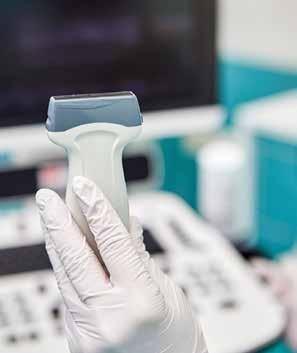Intubating Asthma
SECTON REPORT CRITICAL CARE MEDICINE
Charles J. Blevins, MD
If a room full of emergency medicine physicians was asked, “How would you manage a severe asthmatic?” There would be a plethora of responses. However, all would likely agree that intubation is a last resort; something only to be considered when all other treatment options have been exhausted. Acute asthma exacerbations account for nearly two million ED visits annually and about 4% of these patients require ICU admission. Approximately one-third of those ICU admissions—roughly 27,000 patients—will require mechanical ventilation. Despite the complexity of initial management, outcomes for this subset of patients are reassuring. Unlike most other conditions that require mechanical ventilation, survival rates for intubated asthmatic patients range between 80-100%, with the majority of studies showing mortality rate <10%.1,2 The scarcity, severity of illness, and reversibility of this condition dictate the routine rehearsal of management techniques, similar to procedures like pericardiocentesis or cricothyroidotomy. The initial management of severe status asthmaticus should include some or ALL of the treatments in Table 1.3,4 In addition, non-invasive ventilation (NIV), equally effective in lowering PaCO2 in patients with severe hypercapnia, may be trialed. Still, up to 17% of patients receiving NIV will ultimately require intubation.2 There exist countless algorithms for the management of the severe asthmatic; for the purposes of this discussion, we will skip straight to intubation. Indications for intubation in the severe asthmatic include cyanosis, partial pressure of oxygen (PaO2) less than 60 mmHg despite supplemental oxygen, bradycardia, persistent acidosis, altered or worsening level of consciousness, signs of exhaustion, paradoxical thoracoabdominal
motion, a silent chest, and respiratory arrest. Worsening hypercapnia is also a factor to consider. PaCO2 is expected to be low in a hyperventilating patient (<35 mmHg), and the presence of elevated or even normal PaCO2 should be concerning for impending respiratory collapse.1 However, a single result showing hypercapnia alone should not influence the decision for intubation.5
Preparation Intubating the severe asthmatic can be extremely challenging, as risks include hypoxemia, worsening bronchospasm, pulmonary aspiration, tension pneumothorax, dynamic hyperinflation, hypotension, dysrhythmias, and even seizures. When managing these patients, you are truly between “a rock and a hard place.” The respiratory acidosis created by increased dead space and hypoventilation will limit the functionality of both endogenous and exogenous catecholamines and can lead to cardiopulmonary collapse. Moreover, hyperinflation will decrease venous return, thus decreasing cardiac preload, which can also lead to arrest. A few pearls with regard to pre-intubation management are as follows: 1) maximize oxygenation early 2) consider pH 3) increase chance of first pass success 4) optimize induction, paralysis, and sedation. Preparation for intubation should begin the moment you consider the necessity of managing an airway. In this incredibly sick population, that thought process often begins upon their arrival to the ED. Given their level of respiratory distress, these patients often present to the ED already on non-rebreather masks by EMS. However, it is important to note that many NRB’s are not compatible with nebulized therapies, and the NRB is often replaced by a nebulizer mask. This is a reasonable practice, but one should consider adding supplemental nasal cannula oxygen or even
>>
Table 12,3
Name
Dosing
Supplemental Oxygen
2-6 L/min; Consider higher rate nasal cannula plus Continuous; titrate oxygen saturation to 94-98% nebulized medications overtop via mask; may be difficult to give nebs via non-rebreather
Albuterol Nebulizer
2.5-20 mg/hour depending on formulary (no study suggests higher dosing improves outcome; no study suggests higher dosing increases adverse events)
Continuous preferred over intermittent dosing (at least for the first hour)
Ipratropium Nebulizer [Anti-cholinergic]
0.5 mg diluted in 2.5 mL of saline
Every 20 mins (up to 3 doses), then every 8 hours
IV Magnesium
2-4 mg IV
Over 10-20 mins to avoid flushing and hypotension; may help protect against tachyarrhythmias associated with other treatments; more beneficial in pediatric patients
IV Steroids
1-2 mg/kg IV methylprednisolone equivalent
Every 6-8 hours; mainly delayed effects via immune modulation
SC ß-Agonists
Terbutaline 0.25 mg SC
Once; Specific ß-2 agonist
Epinephrine 0.1-0.5 mg SC/IM
Once; Bridge to IV; ß-1 & ß-2
IV ß-Agonists
Epinephrine 1-4 mcg/min IV
Continuous
IV Ketamine
0.5-1 mg/kg dissociative dose
Once; can re-dose PRN
[ß-Agonist]
Frequency; Notes
COMMON SENSE JANUARY/FEBRUARY 2021
31























